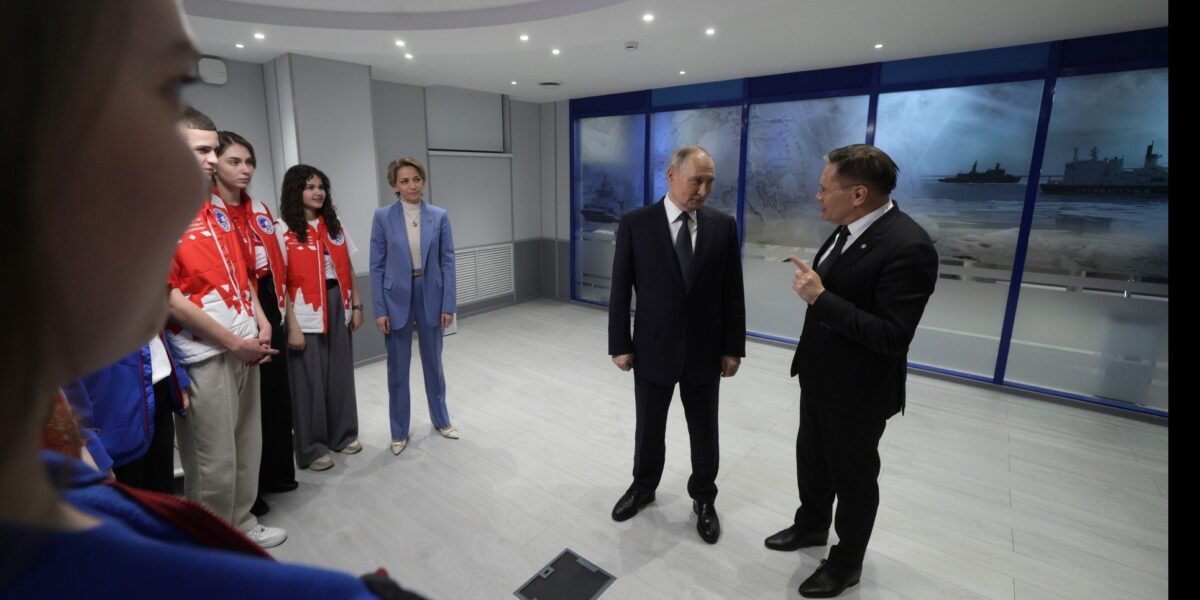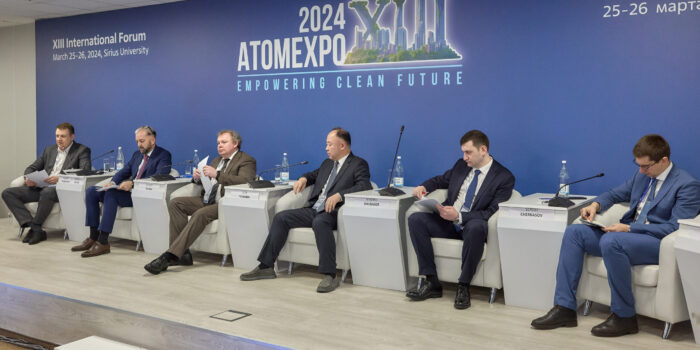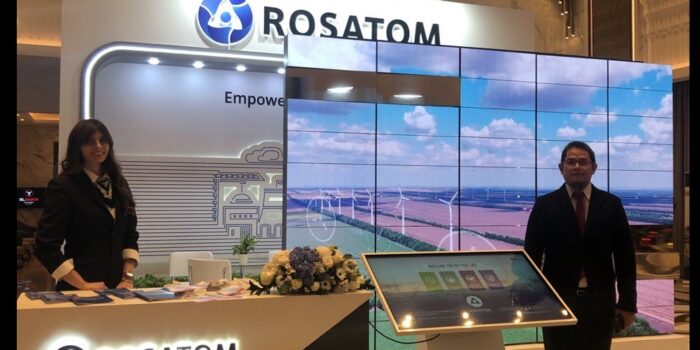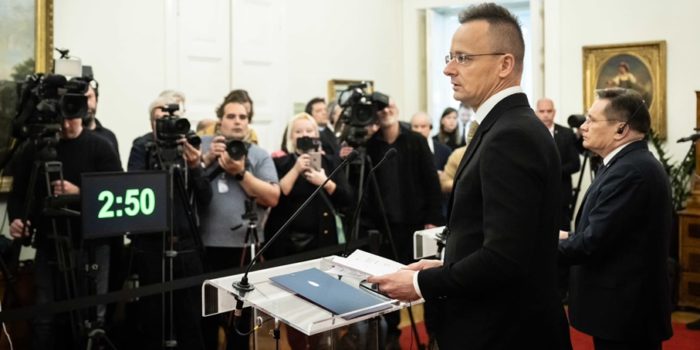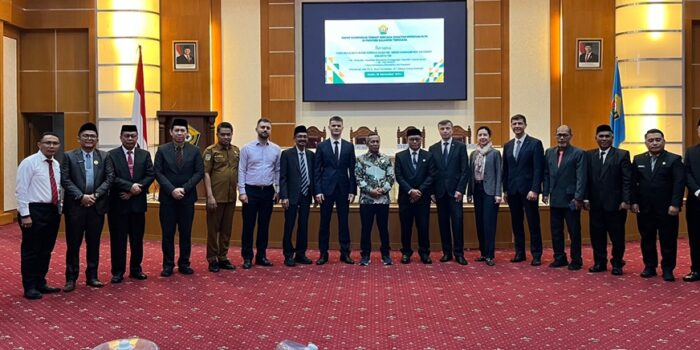On March 27, Russian President Vladimir Putin visited the base of Atomflot FSUE in Murmansk, including the Headquarters of Marine Operations of the Northern Sea Route General Administration, Federal State Budgetary Institution (NSR General Administration FSBI).
The meeting was attended by Alexey Likhachev, Director General of Rosatom; Yakov Antonov, Acting Director General of Atomflot FSUE; Sergey Zybko, Director General of NSR General Administration FSBI; Alexander Skryabin, Captain of the lead nuclear icebreaker Arktika (via videoconference), and other officials.
Sergey Zybko reported that at the time of the visit, 50 ships were navigating the waters of the Northern Sea Route (the NSR), with a group of nine nuclear and non-nuclear icebreakers in operation. “I would like to point out that the headquarters’ operations are demonstrated using Russian software of a unified platform for digital services. Now, you can see satellite radar imagery being displayed on the screen. We have begun employing artificial intelligence to analyze these images. It is worth noting that the ice situation has been worsening in recent years. Despite widespread discussion about global warming, the current research by the Arctic and Antarctic Research Institutes does not prove it. According to these studies, no significant changes in ice cover are anticipated during winter and spring months until 2050.”
From the waters of the Yenisei Gulf, Alexander Skryabin reported to Vladimir Putin on the operations of the vessel and the advantages of Project 22220 icebreakers. “Universal nuclear icebreakers are excellent vessels,” he noted. “I was the captain of the nuclear icebreaker Vaygach for more than 13 years. I may say that the new generation icebreakers are much better than the previous ones in maneuverability, and accordingly, in icebreaking capability. Project 22220 is unique. These icebreakers have better entrance lines. As mentioned, this results in a wider channel, which is crucial for the safe icebreaking assistance in the Arctic waters. I believe that these nuclear icebreakers will make the NSR a viable transportation route of Russia.”
Underway is the construction of the universal nuclear icebreakers Chukotka, Leningrad, and, in the Far East, of the lead nuclear icebreaker Rossiya. Additionally, another nuclear icebreaker under project 22220, Stalingrad, will also be laid down. Alexey Likhachev stated that two more universal nuclear icebreakers are required to maintain steady operations.
During his visit, Vladimir Putin also spoke with participants of the children’s scientific and educational expeditions “Icebreaker of Knowledge”, organized by Rosatom. 12 schoolchildren from different regions of Russia took part in the conversation with the head of state. They gave the president their impressions of the voyage to the North Pole and told him about the prospects that such projects and nuclear technologies offer to young talents. They pointed out the significance of the opportunity to participate in large-scale educational and scientific programs both in general and for children from smaller towns, in particular. These expeditions broaden young people’s horizons and help them understand their role in their country’s and world’s development. Participants spoke about their plans for the future and emphasized the importance of the work done by the expert mentors who accompanied them during this expedition.
A significant issue discussed at the meeting was the cultivation of patriotism among the youth. Pavel Yakushev, a veteran of the Special Military Operation and patriotic education advisor at Rosatom, shared his experience. He told the participants about his expedition to the North Pole as part of the “Time of Heroes” program, and the mission he has undertaken due to his involvement in Rosatom’s projects.
Reference
In 2018, the Russian Government appointed Rosatom the Northern Sea Route infrastructure operator. Rosatom is responsible for overseeing the federal project “Development of the Northern Sea Route” also being involved in the plan for the development of the Northern Sea Route until 2035 and the initiative for the socio-economic growth of the Russian Federation until 2030 “Year-Round Northern Sea Route” approved by the order of the Russian Government. One of Rosatom’s strategic goals is to make the NSR an effective transport artery connecting Europe, Russia and the Asia-Pacific region. A federal project to develop the “Great” Northern Sea Route, a transport corridor from St. Petersburg and Kaliningrad to Vladivostok, was approved in December 2024.
Rosatom have been organizing science popularization expeditions for children to the North Pole since 2019. The project is aimed at popularizing natural sciences and advanced technologies, creating conditions to support children with high potential, develop their abilities and provide them with career guidance. The project involves schoolchildren over 14 years old, winners of federal and industry projects, Olympiads, as well as participants in the Icebreaker of Knowledge competition. Since the start of the project, over 350 gifted young people from various nations have embarked on Arctic voyages to the North Pole aboard the nuclear icebreaker 50 Let Pobedy (50 Years of Victory). In 2024, a voyage to the North Pole was also arranged for participants of the “Time of Heroes” presidential program.
The comprehensive development of the Russian Arctic is a national strategic priority. To increase the NSR traffic is crucial for the success of the outstanding tasks. This logistics corridor is being developed due to the cargo shipping organized on a regular basis, construction of new nuclear icebreakers and modernization of the relevant infrastructure. Rosatom companies are actively involved in these efforts.

